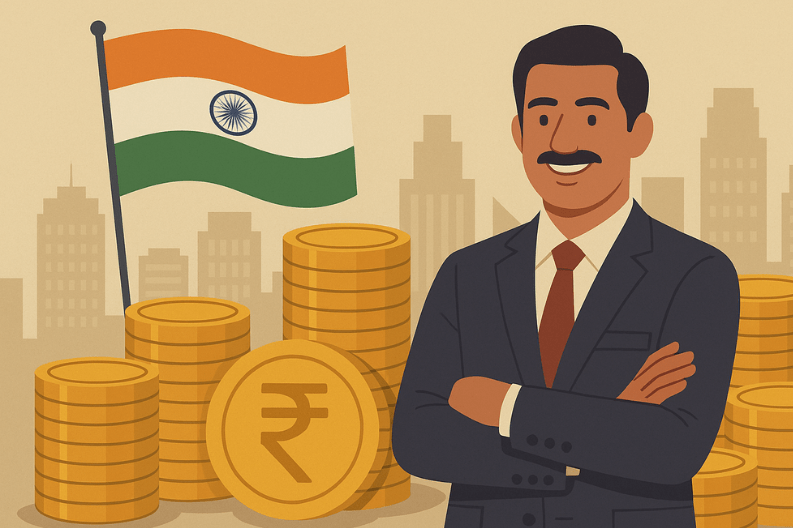On October 1, 2025, a new report revealed remarkable growth in India’s wealthy class. According to the M3M Hurun India Rich List, India welcomes more billionaires every week this year, adding at least one billionaire every seven days. The country now counts 350 billionaires, a figure six times higher than when the list first appeared 13 years ago.
The latest report features 1,687 individuals, each with wealth above ₹1,000 crore. Out of these, 284 people are new to the list, showing that India added 148 more billionaires compared to last year. Over five years, the number has increased by 859 people. Altogether, these billionaires are creating wealth at an astonishing pace of ₹1,991 crore every single day.
The combined wealth of everyone on the list stands at ₹167 lakh crore. This figure is bigger than the entire GDP of Spain and equals almost half of India’s GDP. Even with this huge number, the average billionaire’s wealth fell slightly to ₹9,850 crore from ₹10,320 crore last year, mostly because of global trade issues and political tensions.
At the top of the list, India’s ten richest individuals have grown both younger and wealthier. The minimum wealth needed to enter this elite group rose to ₹1.83 lakh crore, compared to ₹1.63 lakh crore last year. The average age of these ten billionaires is now 69, which is three years younger than before. Together, they hold 28 percent of the total wealth on the list, showing how much wealth is concentrated at the very top.
Startups have played a key role in this rapid growth. The 2025 list includes 97 startup founders, with 46 making their debut this year. Out of these, 12 belong to publicly listed startups. Impressively, 74 percent of the new billionaires are self-made, proving that India’s entrepreneurial spirit is reshaping the nation’s wealth.
When it comes to industries, pharmaceuticals lead with 137 individuals. This is especially true in hubs like Mohali and Chandigarh, which continue to expand their pharma presence. Industrial products follow with 132 people, and chemicals and petrochemicals add another 125.
The report also shows where these billionaires live. Mumbai dominates with 451, New Delhi follows with 223, and Bengaluru has 116. These cities remain central to the country’s economic growth.
Women are gaining visibility too. The list includes 101 women, 26 of whom are dollar billionaires. The overall average age is 65, but what stands out is the younger generation. Twenty people born in the 1990s have already become billionaires, showing how India’s wealth is spreading across generations.
This shift is not just about numbers—it reflects India’s larger economic story. Rising startups, new industries, and strong urban centers are creating opportunities. Punjab’s cities like Mohali and Chandigarh also play a part in this momentum by building vibrant ecosystems for business.
In conclusion, the Hurun report makes it clear: India welcomes more billionaires every week, and the rise of young, self-made entrepreneurs marks a bright future for the country’s economy. With innovation, ambition, and growing industries, India is writing a powerful new chapter in wealth creation.



